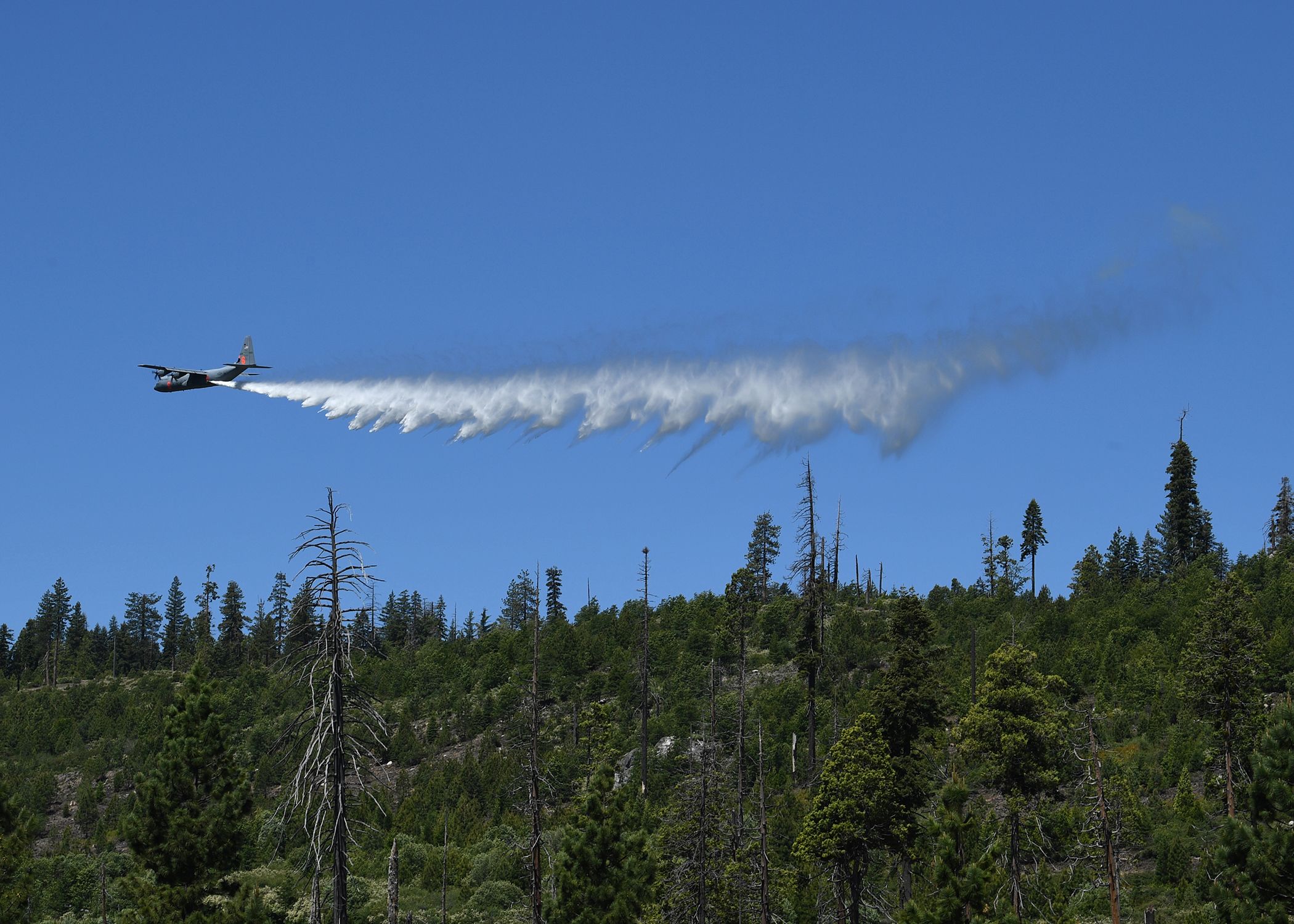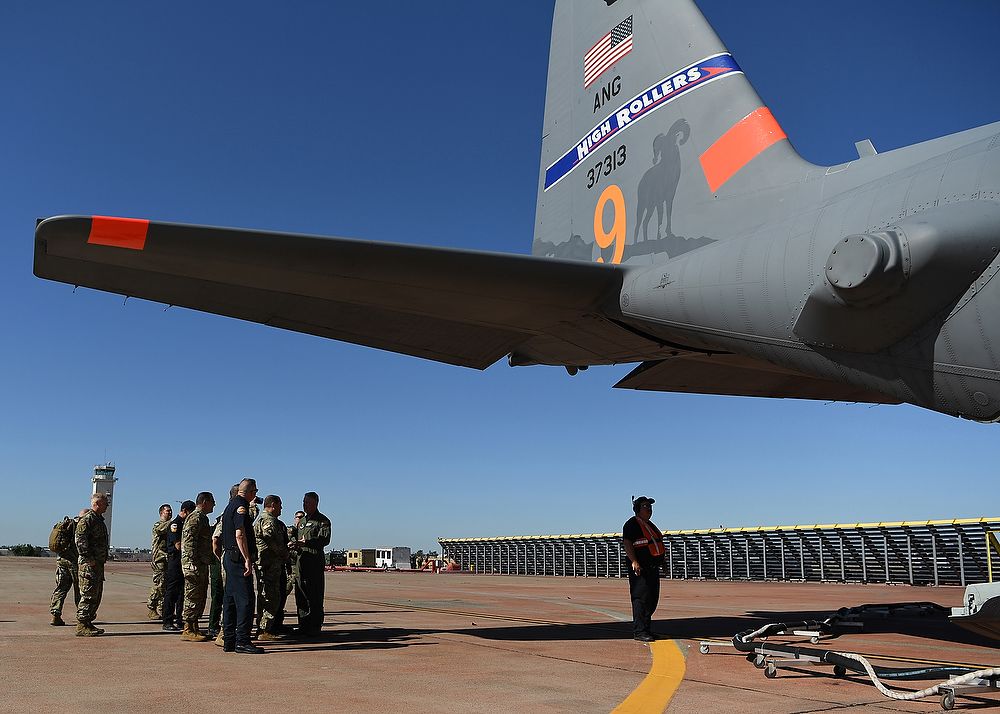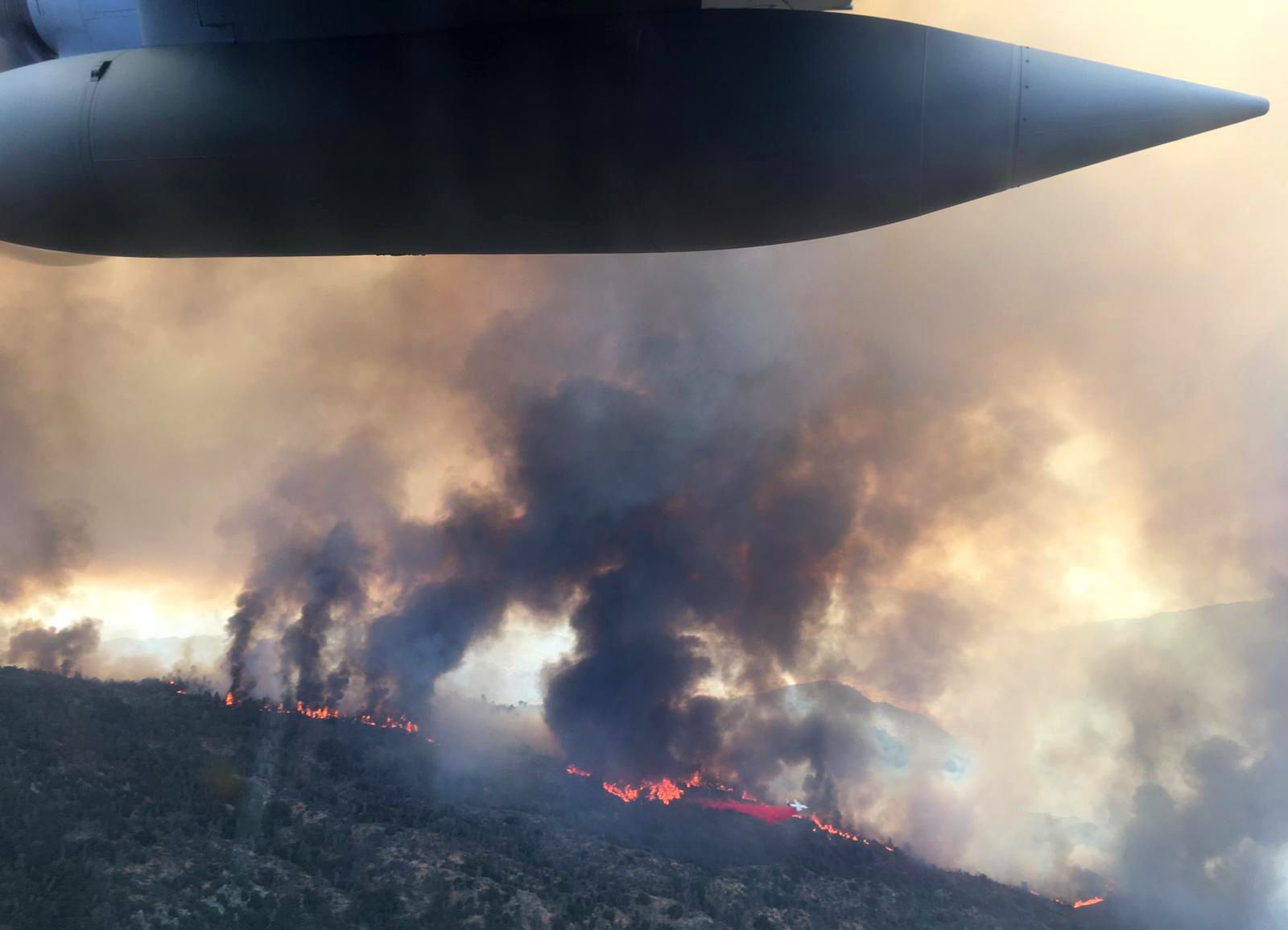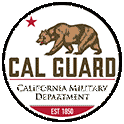MAFFS tackles largest wildfires in California’s history
C-130s called to action as state records five of the six largest wildfires in its history.

Modular Airborne Fire Fighting System (MAFFS) were utilized for their extreme capabilities during the 2020 California wildfires, a season that marked the worst in California history. More than four million acres burned as a result of uncontrollable wildfires, majority happening since July 2020. Utilizing C-130 aircraft, MAFFS units from California, Colorado, Nevada and Wyoming dropped more than 1.5 million gallons of retardant to help contain wildfires. (U.S. Army National Guard video by Staff Sgt. Eddie Siguenza; voice over by U.S. Air Force Maj. Kim Holman)
C-130s equipped with the Modular Airborne Fire Fighting System were utilized for their extreme capabilities during the 2020 California wildfires, a season that marked five of the six largest fires in state history.
Story by Maj. Kimberly Holman
Video by Staff Sgt. Edward Siguenza
Video by Master Sgt. David Loeffler
California National Guard Public Affairs
Oct. 29, 2020
SACRAMENTO, Calif. – The ground shakes and you feel the vibration of four propeller engines approaching long before it’s visible.
The rumble becomes a deafening roar as the C-130 aircraft, only 150 feet above the ground, appears just above the treetops and drops 3,000 gallons of retardant in less than five seconds; thick red liquid coating the pine needles and forest floor below, creating a much-needed line of containment for fire fighters on the ground.
Often times these lines are directly adjacent to a wall of flames.
Modular Airborne Fire Fighting Systems, known as MAFFS, are a roll-on unit placed on the back of a C-130 cargo aircraft.
“We’ve utilized the MAFFS every year since 1973 with the exception of 13 fire seasons. We call upon the MAFFS for their support almost every year,” said Kim Christiansen, Deputy Director, Fire Operations, United States Department of Agriculture and Forest Service.
Many fire pilots, as some call them, explain that this MAFFS mission in many ways is more challenging than any combat missions they have flown.
COCKPIT VIDEO: Ride inside a 146th Airlift Wing MAFFS during a mission to drop retardant over California wildfires, Aug. 22, 2020.
COCKPIT VIDEO: Ride inside a 146th Airlift Wing MAFFS during a mission to drop retardant over California wildfires, Aug. 22, 2020.
High density-altitude and near maximum-weight capacity loads cause the aircraft to perform more sluggishly than normal, while low visibility from smoke, steep mountainous terrain, and dense air traffic push the aircrews to be at the top of their game.
Training is critical for this MAFFS mission, and Cal Guard crews come together annually with CAL FIRE and U.S. Forest Service for training prior to fire season, to hone their skills and standardize operating procedures.
The National Guard and the agencies they support have been working together since the early 1970’s. Standardization of procedures is critical, and over the years the synchronization has become seamless. Cal Guard provides a surge capacity for these partner agencies, supporting them when civilian assets have been maximized.




Dignitaries from the California National Guard and California Department of Forestry and Fire Protection visit CAL FIRE’s McClellan Reload Base during aerial wildland firefighting training June 15-19, 2020, in Sacramento, California. (U.S. Air National Guard photo by Airman 1st Class Melanie Nolen)
Dignitaries from the California National Guard and California Department of Forestry and Fire Protection visit CAL FIRE’s McClellan Reload Base during aerial wildland firefighting training June 15-19, 2020, in Sacramento, California. (U.S. Air National Guard photo by Airman 1st Class Melanie Nolen)

A crew from the 153rd Airlift Wing, Wyoming Air National Guard, gives a thumbs up signifying everything is operational during aerial wild land firefighting training June 15-19, 2020, at McClellan Air Base in Sacramento. (U.S. Air National Guard photo by Master Sgt. Forest Decker)
A crew from the 153rd Airlift Wing, Wyoming Air National Guard, gives a thumbs up signifying everything is operational during aerial wild land firefighting training June 15-19, 2020, at McClellan Air Base in Sacramento. (U.S. Air National Guard photo by Master Sgt. Forest Decker)

About 150 feet above a tree line, a California Air National Guard C-130 aircraft releases 3,000 gallons of water, covering nearly a quarter mile, during aerial wild land firefighting training June 15-19, 2020, at the Tahoe National Forest. (U.S. Air National Guard photo by Airman 1st Class Melanie Nolen)
About 150 feet above a tree line, a California Air National Guard C-130 aircraft releases 3,000 gallons of water, covering nearly a quarter mile, during aerial wild land firefighting training June 15-19, 2020, at the Tahoe National Forest. (U.S. Air National Guard photo by Airman 1st Class Melanie Nolen)
“I think the key for all of us to be successful is our annual training that we do,” said Staff Sgt. Matthew Brazell, MAFFS flight engineer with the U.S. Air Force Reserve’s 302nd Airlift Wing in Colorado Springs. “Once a year we get together with all the CAL FIRE guys, all the different units come in and we all train together, we standardize everything, get to know each other’s ins and outs; doing that annually helps us stay successful.”
There are four MAFFS-qualified C-130 units across the United States, and this year all four contributed their aircraft and personnel to California’s wildfire battle. These units are the California Air National Guard’s 146th Airlift Wing in Ventura County, Nevada Air National Guard’s 152nd Airlift Wing in Reno, Wyoming Air National Guard’s 153rd Airlift Wing in Cheyenne, and the U.S. Air Force Reserve’s 302nd Airlift Wing in Colorado Springs.

A C-130H from the U.S. Air Force Reserve’s Colorado-based 302nd Airlift Wing, equipped with the Modular Airborne Firefighting System, flies over fires near Sacramento after dropping retardant Aug. 3, 2020. (Courtesy photo)
A C-130H from the U.S. Air Force Reserve’s Colorado-based 302nd Airlift Wing, equipped with the Modular Airborne Firefighting System, flies over fires near Sacramento after dropping retardant Aug. 3, 2020. (Courtesy photo)
“We know fire knows no boundaries,” said Christiansen. “We train together, we fight fire together, as the fires starts on one agency and then spread to others; on a fire at any given time you’re going to see multiple agencies that are going to be working together, coming together to work in managing that fire.”
We know fire knows no boundaries.
Since the initial activation on July 23rd, MAFFS-equipped C-130s have dropped nearly 1.5 million gallons of retardant on fires across the state.
Wildfires moved to center stage in August 2020, a year already fraught with COVID-19 and civil disturbance activations across the state. According to statistics maintainted by CAL FIRE, five of the six largest wildfires in state history have burned since August.
The men and women of California’s 146th Airlift Wing were ready to respond when their partner civilian agencies called, living up to the Cal Guard’s motto… Always Ready, Always There.
Video below: MAFFS C-130 pilots and maintainers describe what it takes to fly and perform aerial firefighting missions.
The MAFFS team from the California Air National Guard's 146th Airlift Wing battles California's largest wildfires. (U.S. Air National Guard video by Master Sgt. David Loeffler)
The MAFFS team from the California Air National Guard's 146th Airlift Wing battles California's largest wildfires. (U.S. Air National Guard video by Master Sgt. David Loeffler)


